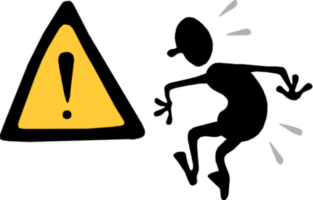Ever develop that sense of deja vu about not getting anywhere during a meeting?
Meeting problems are indicative of resistance that is generated during a meeting. However, resistance can be prevented and mitigated with professional behavior. Here’s what to do about the most common meeting problems.
1. Meeting Problems — Lack of clear purpose
All too frequently, meetings are held for the primary benefit of the meeting leader, typically the group’s director, supervisor, or project manager. The session leader has decided to schedule a series of weekly meetings in advance, typically for their convenience. They anticipate needing the time of others to raise the fog high enough so that they can determine what they need to get done over the next week, until the next meeting.
SOLUTION FOR MEETING PROBLEM — #1:
Carefully articulate the purpose and deliverable of the meeting, preferably in twenty-five words or less. If you are unable to clearly explain why you are having the meeting and the meeting’s desired output (i.e., “What does ‘DONE’ look like?”), then you are not prepared to be an effective meeting leader. If you are the participant, demand a written statement that details the purpose, scope, and deliverable of the meeting, preferably in advance, or don’t attend.
2. Meeting Problems — Unprepared participants
Lack of clear purpose (mentioned above) is the main reason participants show up unprepared. Before and sometimes during the meeting, they remain unclear about what “showing up prepared” looks like.
SOLUTION FOR MEETING PROBLEM — #2:
Beyond a written statement about the meeting’s purpose, scope, and deliverables, participants need an advanced understanding of the agenda. The agenda explains how the meeting will generate results so that participants can get out. Nobody wants more meetings or longer meetings. Detailed questions determine agenda topics (e.g., What are our options?). Ideally, participants should know the questions to be asked during the meeting before it begins, so that they can attend prepared and ready to respond.
3. Meeting Problems — Biased leadership
Nothing will restrain the input of participants faster than a leader who begins to emphasize their answer. Participants will then hope the leader exposes an entire position before they begin to make contributions, so that they know where they stand, and avoid embarrassment about being “wrong”.
SOLUTION FOR MEETING PROBLEM — #3:
Leaders should embrace neutrality. If they want others’ input and opinions, then ask and listen. If they don’t want others’ ideas, they should not have a meeting. There are more cost-effective means for informing and persuading than hosting meetings. Being neutral is like being pregnant, you either are or you’re not—there is no grey area.
4. Meeting Problems — Scope creep (strategic and tactical blending)
All too often, meetings dive deep into the weeds (i.e., HOW or concrete methods) or challenge the purpose (i.e., WHY or ultimate intention). Nobody wants more meetings, they only want results.
SOLUTION FOR MEETING PROBLEM — #4:
To avoid scope creep in the meeting, carefully craft a written statement reflecting the scope (see item number one above). Carefully police the scope of an issue so that participants don’t go too deep into the weeds. Thus ensure that others do not argue about the reason for a project, as project approval is beyond the scope of most meetings. For pertinent strategic issues that are beyond the scope of the meeting, capture them in a “Refrigerator” (aka “Parking Lot”) to preserve them until you can meet in a workshop forum that discusses strategic issues, their implications, and what needs to be done about them (recommendations).
5. Meeting Problems — Poor or non-existent structure
Lack of structure applies both at the meeting level (i.e., agenda) and within each agenda step. Structure enhances flexibility and gives you a method for delivering ‘done’. Most leaders are competent at soliciting ideas (i.e., creating a list) but remain frail during the analysis activity. Therefore, use our Meeting Pathway and Meeting Canvas regularly.
SOLUTIONS FOR MEETING PROBLEM — #5:
Determine in advance:
- What are you going to do with the list?
- How will you lead them to categorize items?
- Should you categorize, or perhaps push on to specific measurable details?
- If prioritizing, have you separately identified the criteria?
- How are you going to lead the group to apply the criteria to the options that lead to a prioritized list?
6. Dealing with the Meeting Problem — “They’re all Priority One!”
A group would not prioritize a list of activities because they felt that all were very important and that prioritizing them would allow some to drop off and not get done. The support organization had only a limited number of resources and limited time. First of all, how do you get a group to set priorities?
SOLUTIONS FOR MEETING PROBLEM — #6:
- Separately develop the criteria that prove the importance of the activities.
- Admit that all the actions are top priority or they would not have been discussed.
- Ask them to prioritize the criteria, one relative to each, other using the Bookend tool.
- Build a Decision-Matrix to align the criteria with the activities and develop a sense of relative importance, without omitting anything.
7. Dealing with the Meeting Problem — “Don’t Measure Me”
An organization is culturally biased against SMART measures and hard objectives during a business process improvement initiative. Hence, history has caused them to resist, cheat, or fall victim to objective measures. Since the facilitator must get the group to define SMART measures and objectives, what should they do?
SOLUTIONS FOR MEETING PROBLEM — #7:
- Follow a method that allows the group to define their measures—by first defining the rewards, benefits, risks, challenges, and then associated measures.
- To ensure that key measures have been identified, ask participants to draw upon benchmarking of competitors and other industries
- Have the group identify their concerns with SMART objectives and develop strategies or actions to address their concerns. Consider the Content Management tool.
8. Dealing with a Meeting Problem — One-Day Wonder
A diverse group has one day to define an improved critical scheduling process. Because the improved process needs clear roles and responsibilities, how do we get them going?
SOLUTIONS FOR MEETING PROBLEM — #8:
- Define a limited deliverable very clearly with the project manager. Focus on what can be done within the time frame.
- Have the participants complete before the workshop, such as benchmarking, assessment tools, etc.
- Conduct a quick team-building exercise at the start to pull the team together as quickly as possible.
- Timebox steps as necessary with precise rhetoric that questions “Did we get the most important stuff?” and NOT “Did we get everything?”.
9. Dealing with Meeting Problems — Two Groups
We have two groups, each from a different office, yet each is jointly responsible for a project. One was actively involved upfront (the project manager is from that area) while the other was not involved in the initial meetings. The second group feels no ownership even though they have a key role. How do you get them together?
SOLUTIONS FOR MEETING PROBLEM — #9:
- Meet with the second group first in developing the workshop and to help them understand what has developed, their role, and clarify the issues that concern them.
- Meet with executive management to reinforce their support for the project because their visible support motivates others.
- Launch a formal kick-off meeting and provide some team-building exercises.
10. Dealing with Meeting Problems — Executive Solution
A workshop designed to focus on business process improvement opportunities. The workshop develops the goals, objectives, principles, and strategies of the initiative. The executive participated in the workshop. However, after the workshop, the executive decided to change the output to suit himself.
SOLUTIONS FOR MEETING PROBLEM — #10:
- Publish the original results for distribution to all stakeholders as soon as possible.
- Also, have the project manager intervene on behalf of the project team members.
- Carefully document the risks and rewards associated with the mandated change.
- Next time, emphasize ground rules about consensus building and educate the executive, before the workshop, on empowerment, ownership, and accountability.
It’s not easy to lead a successful meeting. No one ever said it was. Success begins with clear thinking and understanding of how to avoid the most common problems with meetings.
______
Don’t ruin your career by hosting bad meetings. Sign up for a workshop or send this to someone who should. MGRUSH workshops focus on meeting design and practice. Each person practices tools, methods, and activities daily during the week. Therefore, while some call this immersion, we call it the road to building high-value facilitation skills.
Our workshops also provide a superb way to earn up to 40 SEUs from the Scrum Alliance, 40 CDUs from IIBA, 40 Continuous Learning Points (CLPs) based on Federal Acquisition Certification Continuous Professional Learning Requirements using Training and Education activities, 40 Professional Development Units (PDUs) from SAVE International, as well as 4.0 CEUs for other professions. (See workshop and Reference Manual descriptions for details.)
Want a free 10-minute break timer? Sign up for our once-monthly newsletter HERE and receive a free timer along with four other of our favorite facilitation tools.

Terrence Metz, MBA, CSM, CSPF, PSP01, HTTO1, is the Managing Director of MG RUSH Facilitation Leadership, Training, and Meeting Design, an acknowledged leader in structured facilitation training, and author of “Meetings That Get Results – A Facilitator’s Guide to Building Better Meetings.” His FAST Facilitation Best Practices blog features nearly 300 articles on facilitation skills and tools aimed at helping others lead meetings that produce clear and actionable results. His clients include Agilists, Scrum teams, program and project managers, senior officers, and the business analyst community among numerous private and public companies and global corporations. As an undergraduate of Northwestern University (Evanston, IL) and an MBA graduate from NWU’s Kellogg School of Management, his professional experience has focused on process improvement and product development. He continually aspires to make it easier for others to succeed.



